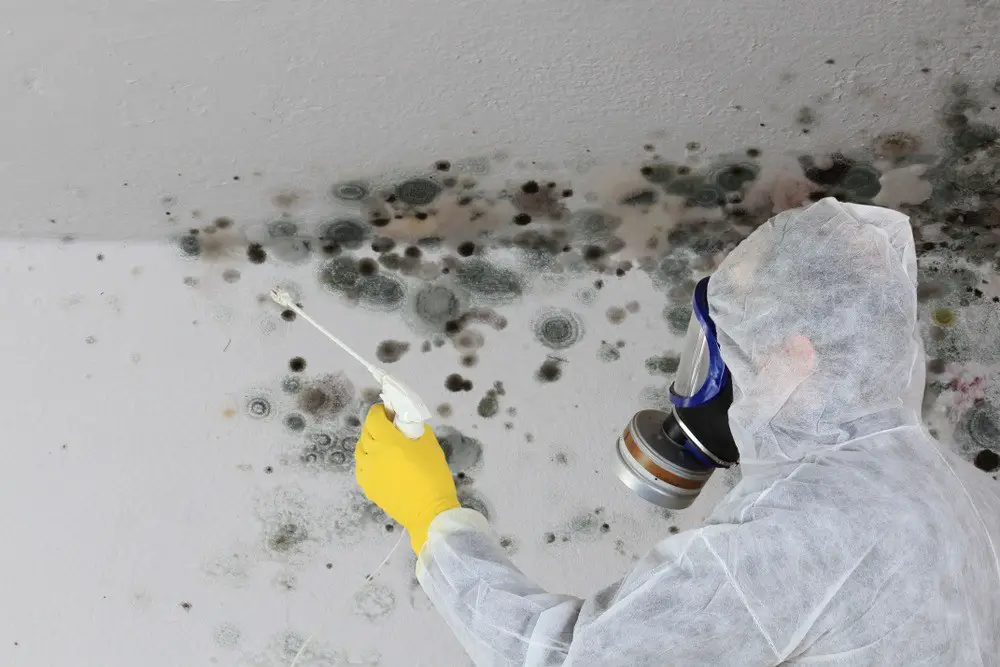- You are here:
- Home »
- Blog »
- Mold Advice »
- 6 Tips To Help You Prevent Mold In Your Home
6 Tips To Help You Prevent Mold In Your Home

Homeowners usually prepare themselves and their homes for many threats ranging from burglary to fire, but they sometimes forget about mold infestations. Mold may seem harmless, but it has serious long-term effects on your health and your home’s structural integrity. So, what are some tips to help you prevent mold in your home?
The most basic tips to help you prevent mold in your home are:
- Controlling humidity and moisture
- Keeping your home ventilated
- Monitoring the humidity
- Decluttering your home
- Using a dehumidifier
- Cleaning regularly
Table of contents
Know Mold-Prone Areas
It may be impossible to completely mold-proof your home. But you can take measures to make it mold-resistant. For that, you need to identify areas that are prone to mold such as the attic, basement, or bathroom.
You need to be extra vigilant, taking proper measures to prevent mold in such areas. Otherwise, it will not take long for mold spores to sprout and spread. Let us look at how you can make these areas mold-resistant.
6 Simple Tips To Help You Prevent Mold In Your Home

There are plenty of things you can do to prevent mold in your home. Here are six of the most effective ones.
Tip 1: See Moisture? Dry It Immediately
Mold relies on moisture to grow, so you need to clear moisture and stagnant water immediately. Condensation from showers, spills, and bad air conditioning can all provide conditions for mold to grow.
You may also have excess water in the basement after heavy rainfall or in the bathroom after a long shower. Just do not let the moisture stay for more than 24 hours.
In case of flooding and water leaks, call in a professional to identify and fix the problem. Stagnant water is not just a problem for mold but can be dangerous especially if you have electrical wires or sockets exposed to the water.
Tip 2: Keep Your Home Well-Ventilated
Many homeowners keep their windows closed throughout the day. It is good practice to open your windows for a few hours to ventilate your home. The breeze of air carries excess moisture out of your home. We recommend you open your bathroom windows after a shower or the kitchen window while you cook. This way you give little time for the moisture to settle on the surfaces of the space, reducing the chances of mold.
Tip 3: Use A Dehumidifier
If you live in an area with humidity over 60% or a lot of rainfall, consider getting a dehumidifier. Air cycles through the device and it extracts moisture, storing it. The device allows you to set the humidity level you want for the specific space you use it in. So, you can make sure that humidity remains between 30% to 60%, the recommended level.
When using a dehumidifier, you need to take precautions. Empty its tank often because leaving water in it for too long when full not only means it can’t draw in more moisture but also makes it prone to mold. The last thing you want is mold formation in the device because it will spread the spores through the air cycled through the device.
Tip 4: Declutter Your Home
Too much clutter prevents proper airflow. Many homeowners also block HVAC system vents with plants, furniture, and other items. Go through your home and assess what is necessary and what is not. Get rid of the clutter, and make sure all air vents and windows are free from any blockages so air can circulate properly.
Tip 5: Monitor The Humidity
Indoor humidity monitors or hygrometers have made it easy to keep an eye on your home’s humidity levels. You can go from room to room checking humidity levels to see if any area is too humid, which would be any readings above 60%. You will need to take measures to reduce humidity in such an area right away.
Hygrometers come in all shapes and prices. You can find some priced under $20 to help keep track of humidity levels throughout your home.
Tip 6: Clean Regularly
Regularly cleaning also helps keep mold at bay. Make it a routine to clean areas that are the most susceptible to mold at least once a week.
Final thoughts: 6 Simple Tips To Help You Prevent Mold In Your Home
You do not necessarily need to spend an arm and leg to prevent mold. All you need to do is be aware of mold-prone areas and implement the five tips to prevent mold we have highlighted above. These will help ensure the moisture level remains in check and your home is mold-free.
So, what steps are you going to take first? Let us know your thoughts and why in the comments below!
About the Author Belal
Belal Rizvi enjoys writing about home improvement and do-it-yourself projects. He is an avid learner of the mold removal and dehumidifiers industry and provides insightful information about it to the readers.
